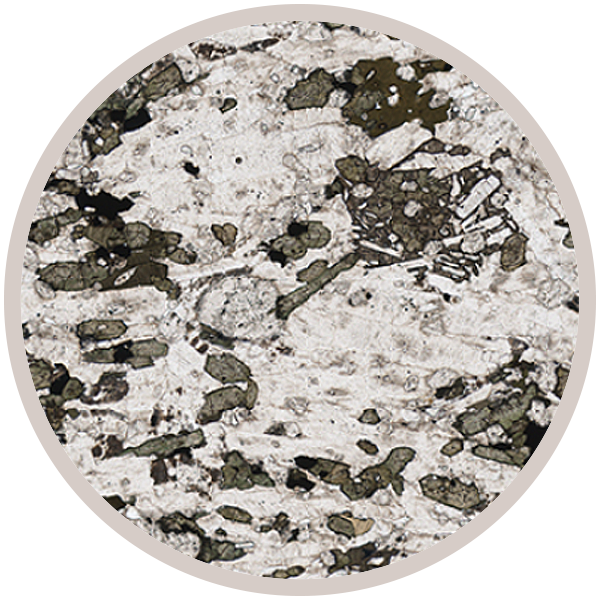
Fact sheet
Sample MTD05 collected by Michael T. Doel
Described as having tugtupite, polylithionite etc. River boulder.
Rotation 1 -
Rotation 2 - microcline K(AlSi3O8)
Rotation 3 - polylithionite KLi2Al(Si4O10)(F,OH)2
Rotation 4 - eudialyte Na15Ca6(Fe2+,Mn2+)3Zr3[Si25O73](O,OH,H2O)3(OH,Cl)2 , arfvedsonite and ?
Ilimaussaq is the type locality for eudialyte
Kakortokite: a variety of agpaitic nepheline syenite displaying pronounced cumulate textures and igneous layering with a repetition of layers enriched in alkali feldspar, eudialyte and arfvedsonite.
The Ilimaussaq alkaline complex is the type locality for agpaitic nepheline syenites and represents an enormous concentration of rare elements, notably Li, Be, Nb, Zr, REE, Y, Th and U. Around 220 mineral species have been identified. We can't identify all the minerals present in these samples. Email us at virtual-microscope@open.ac.uk if you can help.
Note we have recently expanded the collection to include other syenite complexes worldwide.
See also Alex Strekeisen's great website for more information on syenite complexes.
Sample details
More from this collection











